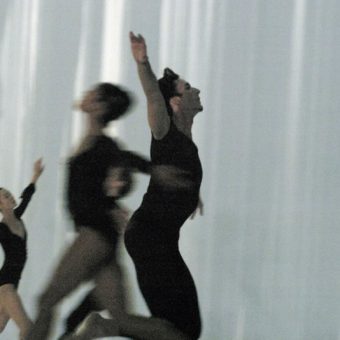Morning Ground
World première: 9 September 2004
Dutch National Ballet, Het Muziektheater, Amsterdam, The Netherlands
Choreography, Concept and Staging David Dawson
Music Frédéric Chopin
Set Design Georg Reischl
Costume Design Yumiko Takeshima
Light Design Bert Dalhuysen
Assistants to the Choreographer
Alan Barnes / Eleonora Demichelis
We all walk in mysteries. We are all surrounded by an atmosphere, about which we still know nothing at all. We do not know what stirs in it and how it is connected with our intelligence. This much is certain; under particular conditions our souls are able to reach out beyond their physical limitations. From self-possession to remembrance. A ladder from the sky, leading between this world and other realms.
David Dawson’s MORNING GROUND is about individuals fully engaged in exploring existence and dancing to the music of their own bodies. Blossoming and then decaying, again and again and again. Shot with the unexpectedly intimate moments, the dancers interact in almost random ways, contacting, dissolving and reforming into those ingenious groups and sensuous poses. If one tries to force the visions, they evaporate. If one does not pursue them, they also disappear. It is as if watching a model of thinking, of the neurochemical process of one’s subconscious creating thoughts.
The bodies are the coagulated, crystallized, or materialized consciousness of the past. They return over and over again, to this inner separation, felt as terror, as rapture, as yearning for connection to some reality. The choreography makes the dancers unlive their former lives, wandering across a shimmering space of radiant morning light. This is the ‘arrival’ point. These are ‘the heavenly people’.
MORNING GROUND is a firework of emotions with captivating, sublime sequences of movements. The couples follow the flowing piano music of selected Chopin’s preludes in warm communication. The supernatural seems natural. Images crowd into one’s mind – faint, fragmentary, flickering. Pictures form and disperse at high speed. Geometric mandala patterns appear and fade. We watch twisting forms that are tubular, tentacular. The dancers’ faces and sometimes even their whole bodies are covered with a network of asymmetrical pas, alternating with delicate geometrical patterns. Pretending to learn about the other while studying endless reflections of oneself. The study of the world running down.






























